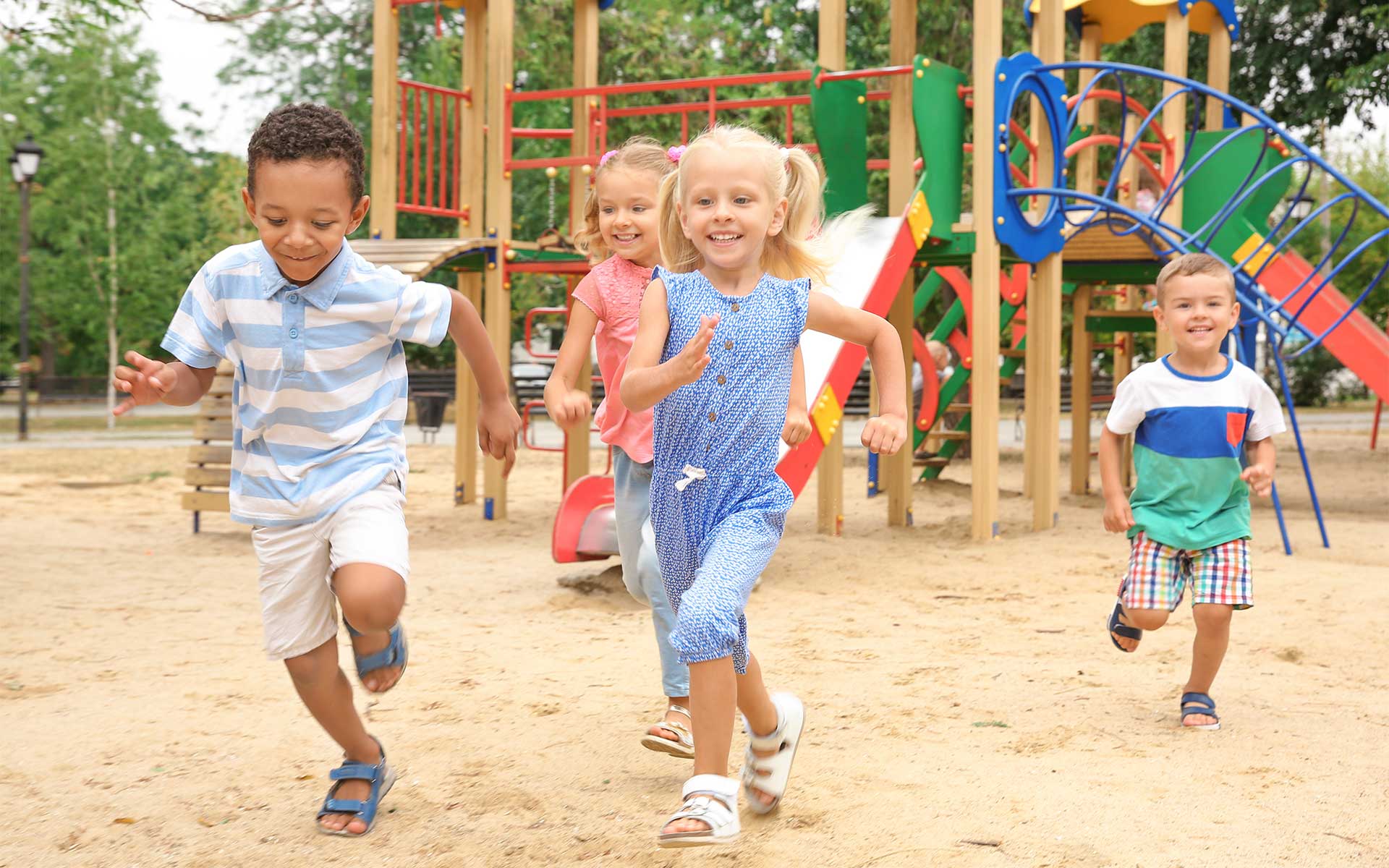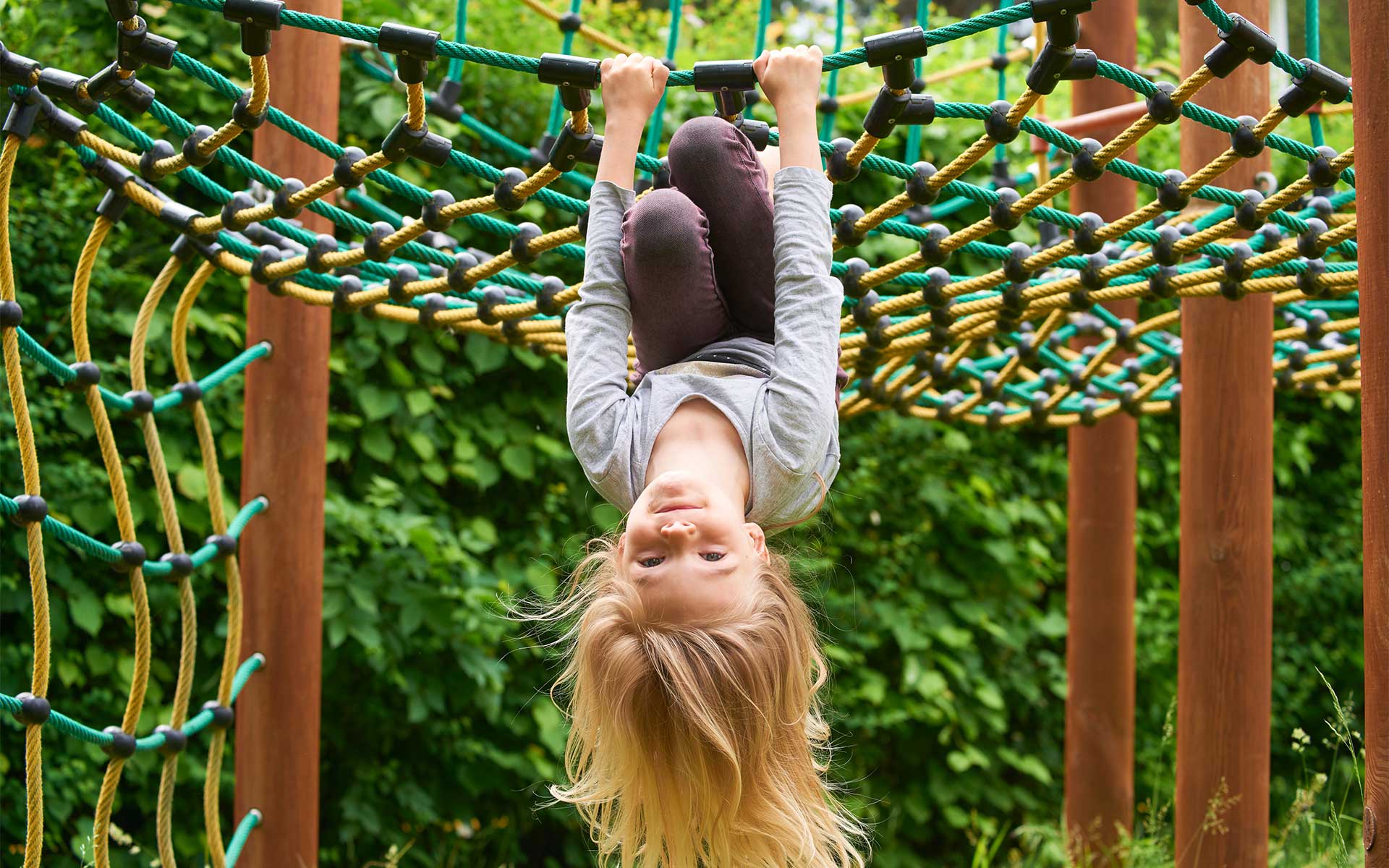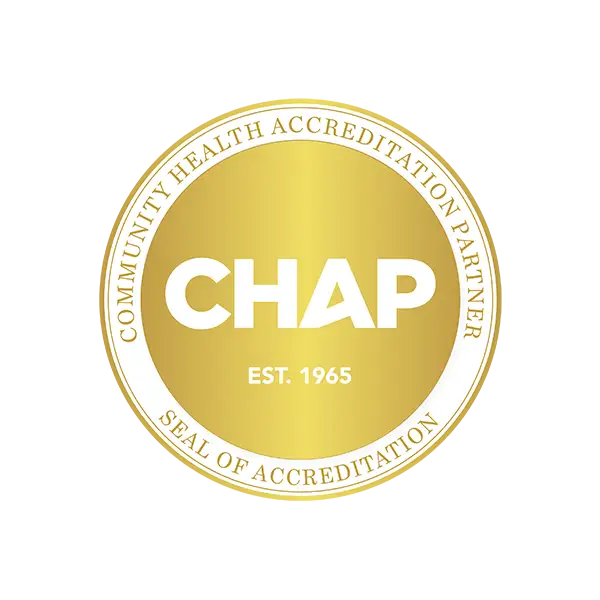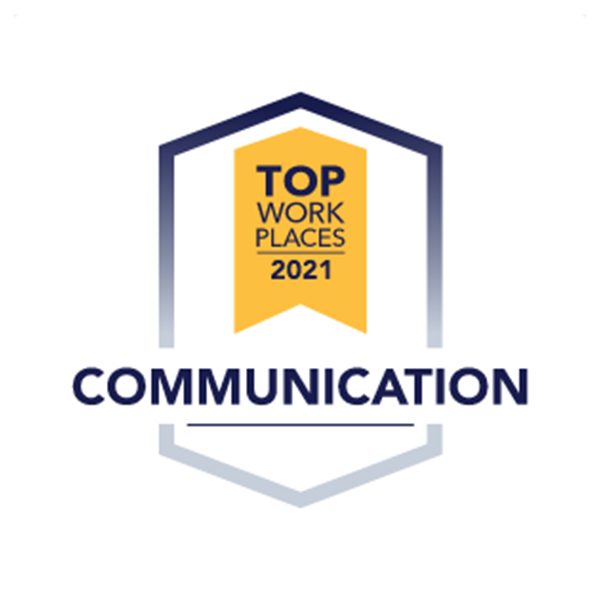
Although playgrounds are typically associated with fun, they can also serve as a powerful therapeutic tool. These structures provide an immersive and exciting play experience for children while simultaneously enhancing cognitive, physical, social/emotional, and sensory skills. Therefore, by integrating playground activities into their sessions, therapists can create a fun, yet effective, environment that fosters essential skill development.
Each playground is made up of an array of equipment designed to stimulate different senses and progress varying skills. This may lead to the question of: “What equipment is best to use during a therapy session?” While not one piece of equipment is best, we have compiled a list of the top 10 playground equipment pieces to incorporate into a therapy session.
Top 10 Playground Equipment Choices for Therapeutic Use
1. Climbing Walls
These structures tend to be among the favorite playground attractions, but also serve as a beneficial tool for therapy sessions to enhance children’s cognitive, motor, physical, and social skills. Climbing walls encourage children to interact with the equipment via climbing while also socializing and interacting with peers. By incorporating this equipment into a session, therapists can help children advance their skills emotionally and physically.
2. Swings
Swings are a common and popular playground attraction that can also be significantly beneficial for the development of skills among children. As users swing, children are improving their core and grip strength, balance, and motor control, all of which are all key skills targeted during therapy. Therapists can tailor their level of assistance easily by aiding the children with a push based on the varying needs and skill levels. Therefore, swings are a simple and adaptable tool that can be used during therapy.
3. Slides
Similar to swing sets, slides are a universal piece of playground equipment that children love! With this said, they can be easily incorporated into a therapy session to stimulate their senses including vision, vestibular, tactile, and proprioceptive systems. Slides target balance and motor control skills, making them an effective and exciting inclusion to therapy.
4. Climbing Nets
Although climbing nets are not as frequently found as climbing walls, they can also enhance essential motor, cognitive, and social skills. These attractions focus on the development of balance and flexibility as children climb and interact with peers along the way. Climbing nets target an array of skills at once, while also providing an engaging play experience for children, which can be a great therapy implementation.
5. Outdoor Musical Instruments
The many bells, metallophones, chimes, and drums found on a playground allow children to engage both vision and touch to hear the music they create in the process. Musical instruments placed around parks are easily accessible and can provide an engaging therapy experience for children with a variety of skill levels. This equipment can serve as a great tool for sensory development.
6. Fitness Equipment

Monkey bars, balance beams, chin-up bars and other fitness equipment playgrounds have to offer encourage motor skill development and overall physical health. Children of any fitness level are able to challenge themselves while working on a variety of motor skills, balance, and strength, leading to an active and exciting therapy session.
7. Multi-User Pieces
Seesaws, we-go-rounds, and we-go-swings are a fun way to encourage the progression of social and emotional skills as children share and work together as they play. Multi-user pieces also have many sensory, motor, and cognitive benefits, making them a diverse tool for therapists to use in order to target many core developmental skills.
8. Learning Walls
Playground features, including gear panels, tic-tac-toe panels, tracing panels, and braille panels, encourage children to use cognitive skills such as problem-solving and reasoning. As children interact with this equipment, they engage their senses and cognitive functions; therefore, they are exceptional therapy tools. Plus, they are fun ways for kids to learn!
9. Enclosed Spaces
Tunnels and domes create an immersive play experience for children of various ages and can aid in social and emotional skill development. While playing, children interact with others closely in tight spaces, encouraging them to learn how to share, communicate, and engage with their peers. By including these structures in a session, a therapist can inspire independence and the progression of children’s social and emotional skill sets.
10. Educational Signage
Lastly, playground signage teaches children by supplying age-appropriate safety information and rules to follow as they play. Reading and interacting with these signs can help foster cognitive skills, such as language and understanding, which are top priorities for therapists. Not to mention, signs are abundant around all playgrounds, so they are very accessible!
Conclusion
Playgrounds offer a variety of structures and equipment that are enjoyable for children, but also serve as beneficial tools for therapists to take advantage of during sessions. Each set of equipment aims to target the development of core cognitive, motor, sensory, and social/emotional skills, and those selected can be personalized to individual needs and skill level. By incorporating these top 10 playground attractions, therapists can create a comprehensive and engaging experience that is beneficial to the development of a child and is FUN!
Looking to design a playground for your center or find a playground near you? Check out our partners at Whirlix Design!
Contact KidsCare Home Health Today
Contact us to learn how our therapists can integrate these top playground equipment pieces into your child’s therapy sessions!















